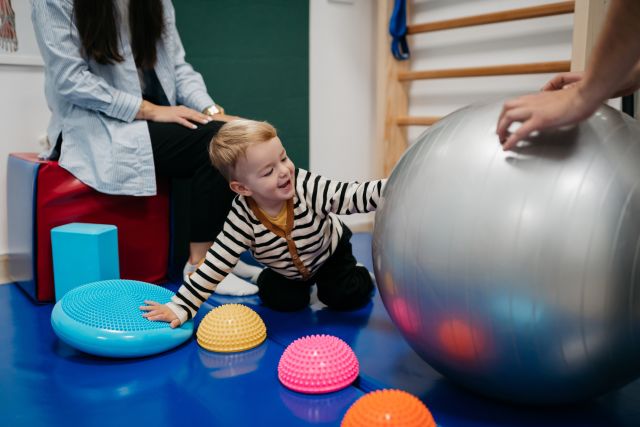Muscular dystrophies are a group of genetic disorders that cause the progressive loss of muscle strength and muscle mass. Progressive means that symptoms get worse over time, and over time muscular dystrophies can cause difficulty with everyday tasks and mobility. Some muscular dystrophies also affect nerves and organs, especially the heart.
Muscular dystrophies are rare disorders, but some types of muscular dystrophy are more common than others. The most common muscular dystrophy in children is Duchenne muscular dystrophy (DMD).
DMD is caused by a mutation in the dystrophin gene, which leads to a lack of the dystrophin protein that is necessary for muscle function and repair. This type of muscular dystrophy predominantly affects males and rarely occurs in females due to the inheritance pattern. While this disorder is inherited, in many cases it is diagnosed in people with no family history.
What are the early signs and symptoms?
Symptoms of Duchenne muscular dystrophy begin before the age of 6 years old—typically the first symptoms become noticeable between the ages of 2 and 3 years. In some cases, symptoms begin during infancy.
Like other forms of muscular dystrophy, DMD causes the loss of muscle strength and muscle mass. This typically begins in the legs and pelvic area, but it can worsen and spread to other areas of the body as the disease progresses.
Signs and symptoms of DMD that may be noticeable in childhood include:
- Problems with motor skills and/or motor milestones, such as crawling, walking, or running.
- Difficulty getting up from a seated or lying position, difficulty climbing stairs, clumsiness, and/or frequent falls.
- Trouble with activities that require strength and balance, such as lifting objects or throwing a ball.
- Weakness in the legs, which may cause a waddling gait or difficulty keeping up with peers.
- Enlarged or bulky muscles in the calves, thighs, buttocks, and/or shoulders (called pseudohypertrophy, a condition where enlarged muscle tissue is replaced by connective and fat tissue)
- Learning difficulties or intellectual disability
- Delayed growth
- Muscle pain, fatigue, shortness of breath
- Swelling in the feet
What to do if you notice signs and symptoms?
Regular appointments with a pediatrician can help identify signs and symptoms as early as possible. If you are a parent or caretaker to a child and notice any of the above symptoms—or have other concerns about the child’s health and development—see a pediatrician. It’s also important to mention that DMD is only one type of muscular dystrophy. There are other types that affect males and females, with symptoms that begin at later ages.
What treatments are available?
While there is no cure for DMD, there are treatments that can help people with DMD live a better quality of life. While everyone’s treatment plan will be different, a treatment plan will often include physical and occupational therapy, corticosteroid drugs to help slow the loss of muscle strength, and therapies to help with health conditions caused by having DMD.
Medical researchers continue to learn more about DMD—and develop new treatments. There are already several drug therapies available to treat DMD associated with specific gene mutations. Other therapies, including gene therapies, are under development.






